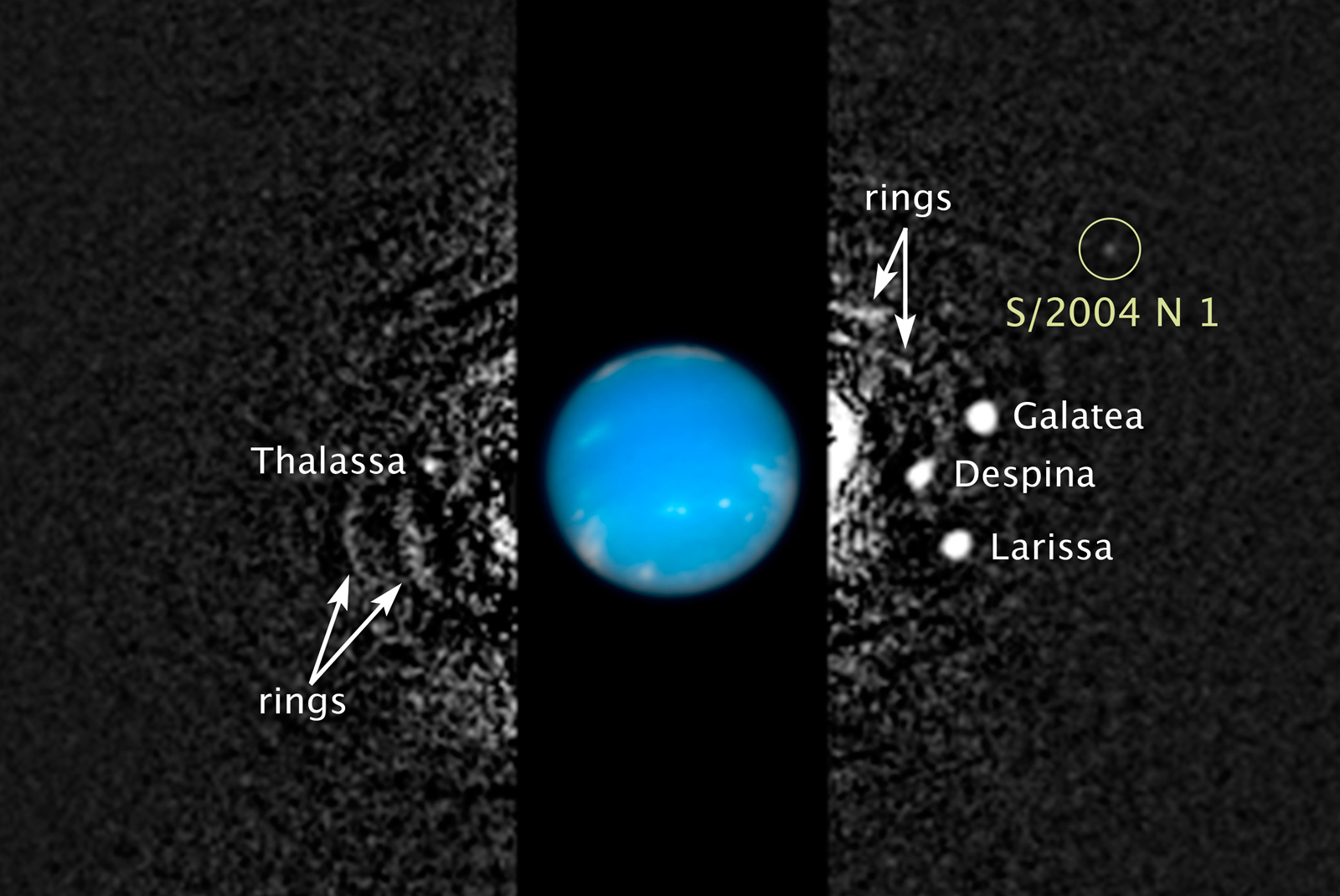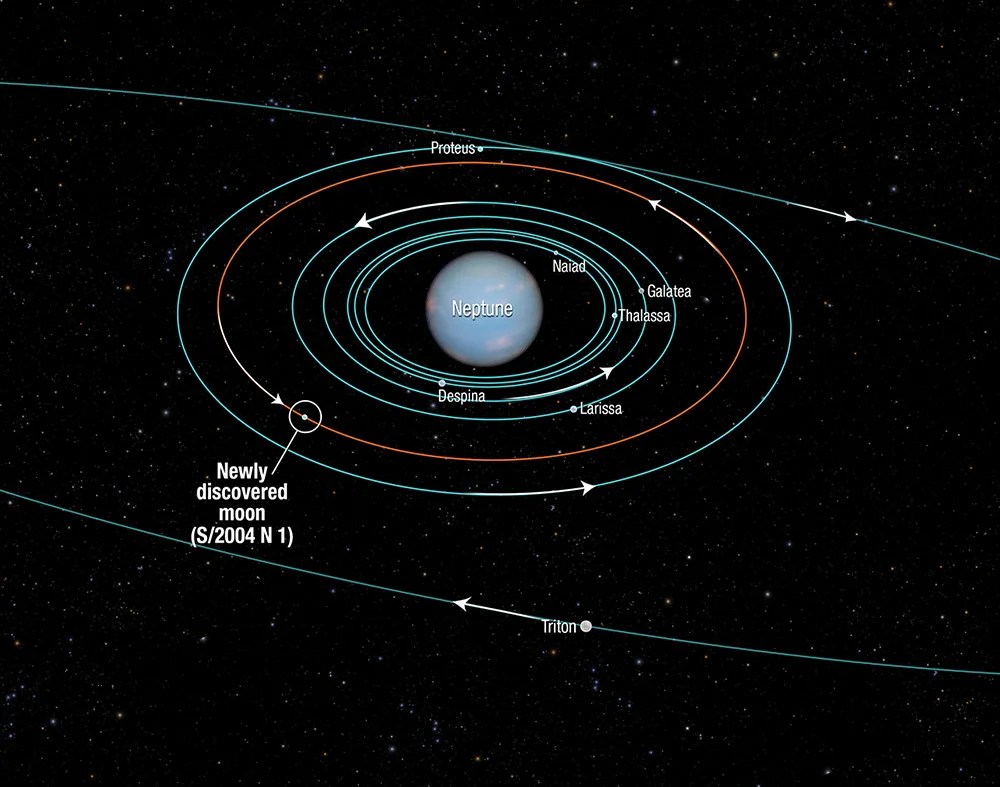Hippocamp

Hippocamp, originally designated S/2004 N1, was discovered by Mark Showalter on July 1, 2013 using Hubble Space Telescope images taken of the Neptune system between 2004 and 2009. Showalter analyzed over 150 archival photographs of the system in which the same white dot appeared over and over again. He then plotted a circular orbit for the moon.
Hippocamp is unusually close to a much larger Neptunian moon called Proteus. Normally, a moon like Proteus should have gravitationally swept aside or swallowed the smaller moon while clearing out its orbital path. Scientists think Hippocamp is likely a chipped-off piece of the larger moon that resulted from a collision with a comet billions of years ago.
The diminutive moon, only 20 miles (about 34 kilometers) across, is 1/1000th the mass of Proteus (which is 260 miles [about 418 kilometers] across). Hippocamp is much smaller than any of Neptune's previously known satellites, and below the detection threshold of the Voyager cameras sent there in 1989. The moon is so small and dim that it is roughly 100 million times fainter than the faintest star that can be seen with the naked eye.
S/2004 N1 orbits its parent planet Neptune every 23 hours. It is nestled between the orbits of Larissa and Proteus.

Hippocamp is a half-horse half-fish from Greek mythology. The scientific name for the seahorse is Hippocampus, also the name of an important part of the human brain. The rules of the International Astronomical Union require that the moons of Neptune are named after Greek and Roman mythology of the undersea world.
It was originally called S/2004 N1 because it was the first satellite (S) of Neptune (N) to be found from images taken in 2004.
